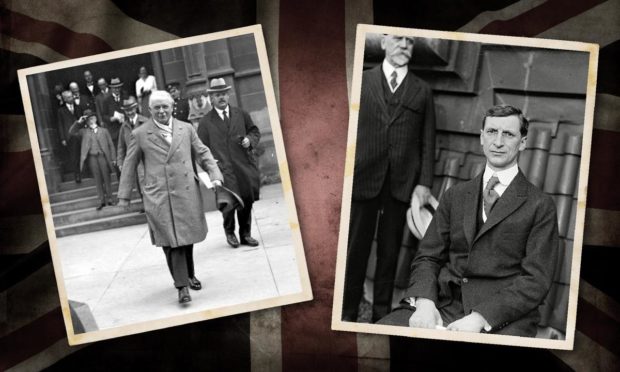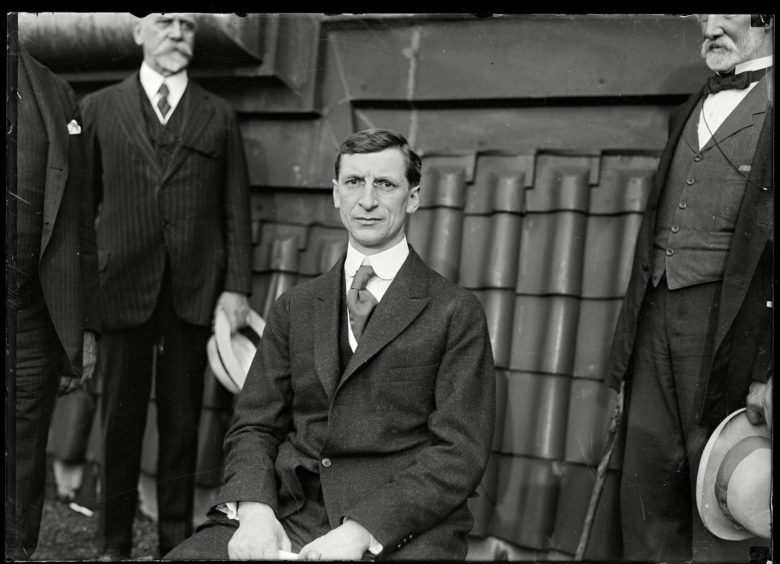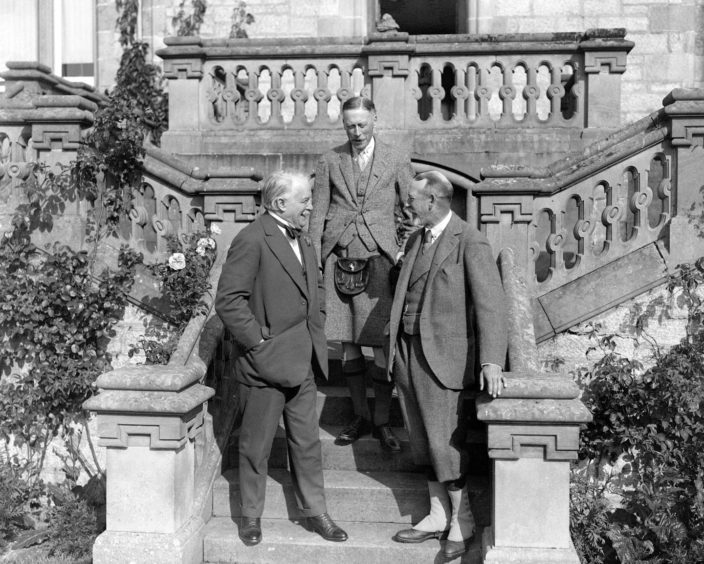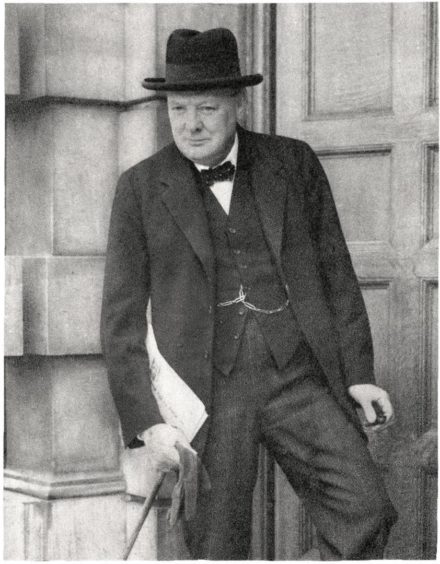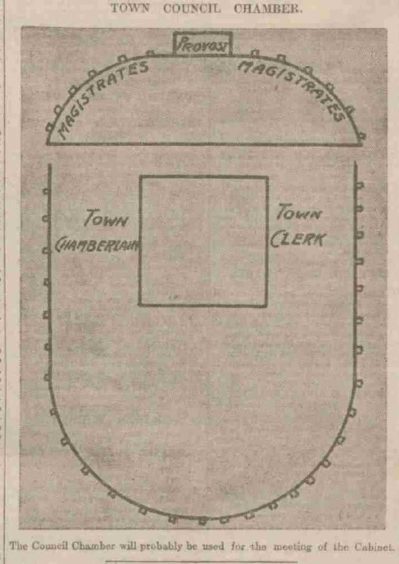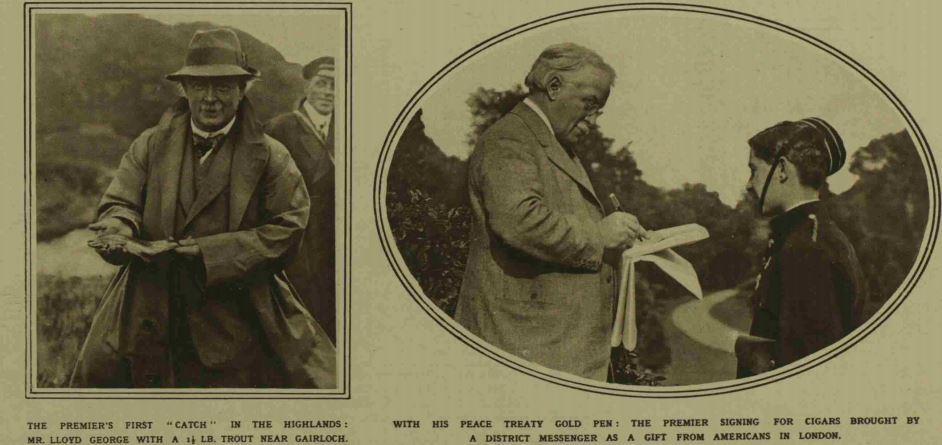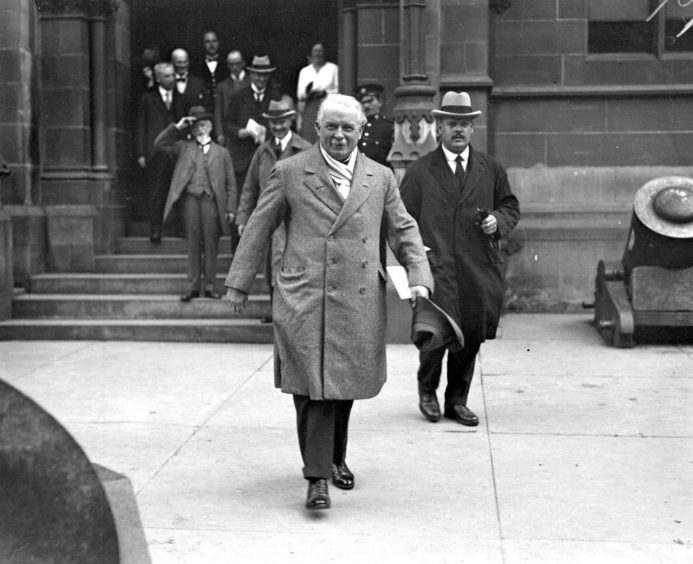Tomorrow marks the centenary of an extraordinary event in Highland history – and one which had far reaching political ramifications.
A crisis in British-Irish relations had blown up while prime minister David Lloyd George was on holiday in Gairloch.
Ireland’s Sinn Fein, led by Eamon de Valera had resoundingly rejected a peace offer from the British government to bring a truce to the increasingly bitter conflict with Irish separatists.
Nothing but full independence would satisfy their demands and matters were reaching a critical climax.
Lloyd George was holidaying at Flowerdale House, family seat of Gairloch’s laird, Sir Kenneth MacKenzie.
Handily, King George V was grouse shooting at Moy, the deputy prime minister was holidaying at Beaufort Castle, and other ministers were also holidaying in Scotland so there seemed little point in interrupting everyone’s pleasant vacations and hot-footing it back to London.
Lloyd George decided to convene a meeting of the cabinet in the Inverness Town House, the first ever to have been held outside Downing Street or Chequers.
Eight ministers travelled up from London.
Perhaps it was the sunny weather, the Highland air, large crowds and relaxed mood that inspired the 16 politicians as they laboured away in the council chamber to come up with the ‘Inverness Formula’, which paved the way for the treaty which created the Irish Free State.
Cabinet members
Present were: David Lloyd George, Prime Minster; J Austen Chamberlain, Lord Privy Seal; Viscount Birkenhead, Lord Chancellor; Sir Robert Stevenson Horne, Chancellor of the Exchequer; Edward Shortt, Secretary of State Home Office; E S Montagu, Secretary for India; Viscount FitzAlan of Derwent, Lord Lieutenant of Ireland; Col. Sir Hamar Greenwood, Chief Secretary of Ireland; Sir Eric Geddes, Minister of Transport; Stanley Baldwin, President of the Board of Trade; Sir Alfred Mond, Minister of Health; Sir Laming Worthington-Evans, Secretary of State for War; Sir Arthur Griffiths-Boscawen, Minister of Agriculture & Fisheries; Robert Munro, Secretary for Scotland; T J Macnamara, Minister of Labour; Thomas Jones, Acting Secretary of the Cabinet and a certain Winston Churchill, Secretary of State for the Colonies.
Excitement built up for days before the cabinet convened.
The Aberdeen Daily Journal of September 3 1921 included a photograph of the Town House and many details about it, from details of its Gothic architecture to descriptions of the coats of arms, oil paintings and fine windows.
The chamber itself was described as “a neatly furnished and compact apartment with a richly panelled ceiling” accompanied by a rather crude hand drawn diagram of the table layout.
The paper also made mention of the rounded building to the left of the Town Hall- the Clan Tartan Warehouse ‘where the Premier and Mrs Lloyd George made purchases on their way to Gairloch’.
And the paper obviously hadn’t forgotten swashbuckling Black Isle soldier Sir Hector ‘Fighting Mac’ Macdonald who had died by his own hand almost 20 years earlier, as it mentioned: “It was in this warehouse that Sir Hector Macdonald served his apprenticeship before enlisting in the Gordons.”
Ramsay MacDonald’s observations
A certain J Ramsay MacDonald from Lossiemouth, on his way to becoming Labour leader the following year, wrote his wry observation of the event in the Glasgow Forward of Saturday September 10:
“There have been no such times as these up here since Charlie landed and the Highland chiefs mustered to squabble around his standard. The Cabinet is to meet at Inverness. Sir Alfred Mond [minister for health] may appear in kilts, and a piper will strut down Union Street to the Station Hotel or the Town Hall to supply the appropriate local colour to the arrival of the Prime Minister… newspaper writers are searching the pages of the Brahan Seer for something appropriate… even as far afield as Buckie the interest in a prohibition poll is eclipsed by this coming glory.”
Thronging crowds
The papers boasted photographs of crowds thronging outside the Town House as Lloyd George arrived, fresh from visiting the King at Moy Hall.
News footage of the moment shows the crowds surging forward to catch a glimpse of the PM as he got out of his car, with police straining to hold them back.
The Cabinet were welcomed to the city by Provost Donald MacDonald, MP for Kinross and Western Perthshire, James Gardiner and George Smith Laing, the Town Clerk.
The press also captured Lloyd George holding his first catch in the Highlands, a 1.5lb trout near Gairloch; and Lloyd George signing- with his peace treaty gold pen- for cigars brought by a district messenger as a gift from an American in London. He generously tipped the young lad £2, the equivalent of about £50 today.
Considering the tense atmosphere and security of modern summit meetings, a holiday spirit seemed to have permeated the Inverness cabinet, turning it into something more like a red carpet event.
Constitutional parallels
Historian Jim Hunter sees the event in terms of constitutional parallels with our age.
He wrote in his P&J column a year ago when Boris Johnson was holidaying in Applecross:
“In the Highland capital’s Town House on September 7 1921, British ministers – getting together for the first time ever outside London – wrestled with the question of whether or not they should deploy still greater military force in an attempt to keep the UK in one piece.
“In the end they opted for negotiations – thus embarking on the process that led to the emergence of the country that began as the Irish Free State and is today the Irish Republic.
Black cat
“Just prior to the Inverness cabinet meeting, a black cat was found to have gained access to the hall where ministers were to gather. Observers committed to the maintenance of UK unity thought this a good omen. But then someone noticed that the Union Jack on the town house flag pole was being flown upside down. This, it was said, was a less hopeful augury as to the chances of UK unity being preserved.
“Now that Boris Johnson is confronting the possibility of a new departure from the United Kingdom – this one involving Scotland rather than Ireland – it might be good to know if, from his Applecross tent, the prime minister glimpsed any equivalent of that Inverness cat or the town house’s wrong-way-round flag.”
Council officer William Bain had the foresight to pass round a piece of paper to collect all the the cabinet members’ signatures on the momentous day.
A copy is now held in the Town House chamber, with the original safe at the Inverness Museum and Art Gallery.
Mr Bain’s war medals and documentation were presented in 2009 to the council by Inverness military history enthusiast Bob Shanks.
A retired civil servant, Mr Shanks was presented with the medals after giving a talk to the Inverness Soroptomists Club by one of its members.
On a visit to the Town House, Mr Shanks saw a painting of Mr Bain on display, which prompted him to pass the medals on to the council
The cllection included First World War British war and victory medals from Mr Bain’s service as a gunner in 484 Siege Battery, Royal Garrison Artillery; and a Royal Burgh of Inverness Medal commemorating the 1937 coronation of George VI and Queen Elizabeth.
They were presented to then-Provost Jimmy Gray and are now held in the Town House collection of artefacts.
In 2008, the Scottish Government met in Inverness as part of a series of travelling cabinets.
In 2009, Gordon Brown brought the UK cabinet to Glasgow to discuss the economy.
In 2020, Boris Johnson said he would consider taking the cabinet to Inverness to mark the centenary year.
You might enjoy:
Lairds of the Line: When private landowners had railway stations and waiting rooms
